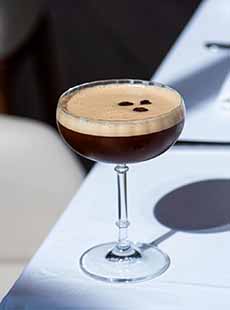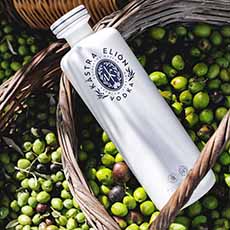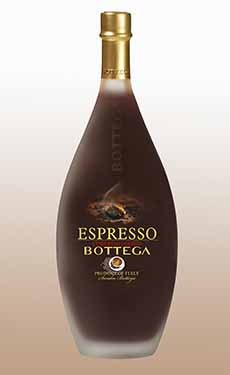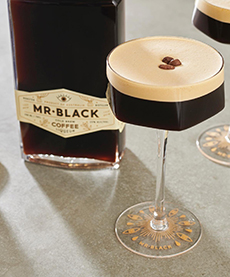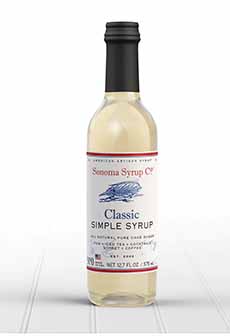Espresso Martini Recipe For National Espresso Martini Day
|
May 15th is National Espresso Martini Day. Long before the first Espresso Martini, the first known recipe for a Martini, printed in 1888 and called the Martinez, lists its ingredients as gin, sweet vermouth, orange Curaçao, gum, and bitters, garnished with a lemon twist. That sweet profile is closer to what modern bartenders call a Martini. Only a Dry Martini, made with gin or vodka, is a classic Martini. Everything else takes the Martini back to its Martinez roots in the 19th century. In the decades following the Martinez, the drink dropped its sweet ingredients and evolved into the dry Martini—possibly with the emergence of London dry gin* and Martini and Rossi’s dry vermouth at the end of the 19th century. The first known dry Martini recipe with gin and dry vermouth appears in 1904 [source]. Then came the Vodka Martini. We can’t pinpoint its first appearance, but in the U.S. at least, records show it being served in New York right after the appeal of Prohibition (December 5, 1933) [source]. Then, in the 1980s, many different flavors of Martini proliferated—mostly sweet flavors with added liqueur, taking the drink back to the Martinez days. Check out these 50+ Martini recipes, from cinnamon to strawberry-balsamic. As you can tell from these two, most of these Martinis are sweet—back to the original Martinez. We’re here to celebrate National Espresso Martini Day (the history of the Espresso Martini is below. But first, an Espresso Martini recipe from Kástra Elión vodka, the first premium vodka distilled from Greek olives. There’s more about the brand below. > The history of the Espresso Martini is below. > The history of vodka. Instead of two ingredients in a Dry Martini—gin or vodka and vermouth—the Espresso Martini substitutes expresso liqueur for the dry vermouth and adds two more ingredients: cold brew coffee and simple syrup. For a less sweet drink, eliminate the simple syrup. The liqueur has plenty of sweetness. Kāstra Eliōn vodka has no hint of olives; you can use any vodka. Most vodka is made from fermented grains such as corn, rice, rye, sorghum, or wheat; although grapes and other fruits (such as olives), as well as potatoes, are also used. You can even distill vodka from plain sugar! Ingredients Per Drink 1. ADD the ingredients to a shaker full of ice and shake hard for 30 seconds. Strain into a Martini glass. 2. GARNISH with coffee beans. The creation of the Espresso Martini is attributed to British bartending guru Dick Bradsell, a mixologist who is credited with revolutionizing the London cocktail scene in the 1980s. He is said to have created the drink—originally called the Vodka Espresso and then the Pharmaceutical Stimulant—at Fred’s Club in the late 1980s. As the story goes, a customer asked for a drink to “wake her up” and he combined vodka, espresso, coffee liqueur, and sugar that he shook into a frothy drink [source]. Some bartenders then added a garnish of three coffee beans, following the custom of a glass of the coffee liqueur, Sambuca. The three beans are said to represent health, wealth, and happiness [source]. The Espresso Martini is made with vodka. Per the comment at the top of the article, no one can pinpoint when the first vodka Martinis were made (in Europe in the 1930s or earlier?). But in the 1960s, vodka got a big boost from a man named Bond, James Bond. Agent 007’s “vodka Martini, shaken not stirred” catapulted this now-classic cocktail to instant stardom. Kástra Elión* Vodka, made in Greece, is the first premium vodka distilled from green Greek olives. The vodka is distilled from wheat and a mixture of olives hand-picked in the town of Nafpaktos, a historic port town situated on the Gulf of Corinth in western Greece. The town has a castle, or kástra in Greek, which gives its name to the vodka. The name roughly means “castles of the olive groves.” Kástra is the plural of kástro, Greek for a castle, and eliá is the word for olive. The bottle is actually a reusable ceramic container, you can use for water or even as a flower vase. On the nose there’s a hint of both saltiness and a fruity/vanilla sweetness, and it’s undeniably clean and pure. Tasting it, this is one of the most interesting vodkas I’ve tried in a while, and I’m not saying that just because I love Greece and its food and drink. The flavor is clean and pure, velvety smooth. It’s a lovely sipping vodka. Except for a slightly salty note (other vodkas can have a pepper note), it doesn’t have any hint of olives—just as other vodkas have no hint of the grain from which they’re distilled. Stin ygeiá sas (“cheers,” in Greek). |
|
|
|
________________
CHECK OUT WHAT’S HAPPENING ON OUR HOME PAGE, THENIBBLE.COM. |
||
